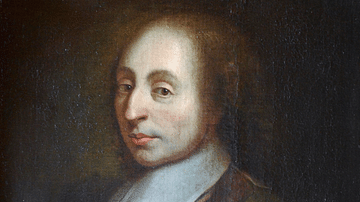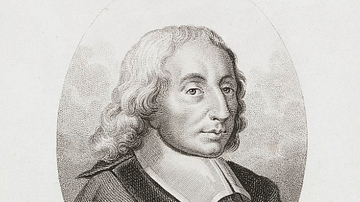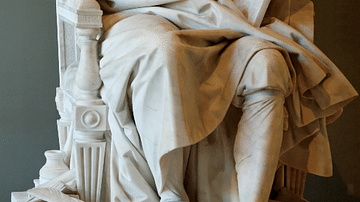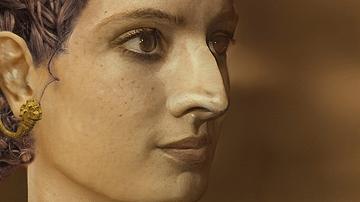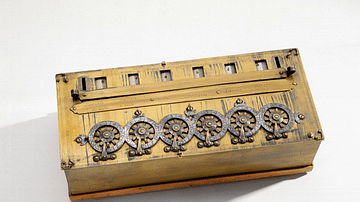Illustration
“The nose of Cleopatra: if it had been shorter, the whole face of the earth would have changed” ~ Blaise Pascal, Pensées 162.
On the basis of portrait coins struck by Cleopatra, philosophers such as Blaise Pascal (1623-1662 CE) assumed that the queen’s prominent nose was an element of the physical attraction with which she seduced Julius Caesar and Marc Antony – and thus changed the course of world history.
Silver hemiobol struck in Patrae, Achaea (Greece) with the diademed portrait of Queen Cleopatra (Heritage 3015, 7-12 September 2011 CE, lot 23278; photo courtesy of David S. Michaels, Heritage Auctions); posthumous portrait of Blaise Pascal by François Quesnel II (1637-1699 CE; oil painting, ca. 1662 CE coll. Musée d’Art Roger-Quilliot). The latter is believed to be in the public domain.
About the Author
Cite This Work
APA Style
Oppen, B. v. (2020, January 20). Cleopatra's Nose, Blaise Pascal. World History Encyclopedia. Retrieved from https://www.worldhistory.org/image/11728/cleopatras-nose-blaise-pascal/
Chicago Style
Oppen, Branko van. "Cleopatra's Nose, Blaise Pascal." World History Encyclopedia. Last modified January 20, 2020. https://www.worldhistory.org/image/11728/cleopatras-nose-blaise-pascal/.
MLA Style
Oppen, Branko van. "Cleopatra's Nose, Blaise Pascal." World History Encyclopedia. World History Encyclopedia, 20 Jan 2020, https://www.worldhistory.org/image/11728/cleopatras-nose-blaise-pascal/. Web. 30 Apr 2025.



